ECHELON HARMONY Polaris
Inside the $6.5 Trillion International Space Station of 2175
Here’s a place where the future doesn’t gleam – it hums. Where brass gauges sit beside Light Field Displays, where hydroponic tomatoes taste like childhood, and where antimatter reactors whisper lullabies.
Welcome to Echelon Harmony Polaris, humanity’s $6.5 trillion love letter to the stars – an international space station so audacious, so alive.
This isn’t just a orbital habitat. It’s a rebellion. A rebellion against the cold, sterile future we were promised. Here, engineers brawl with physics in workshops that smell of oil and sweat, chefs compose symphonies with zero-gravity-grown basil, and every sunrise over Earth is a private show for the dreamers who dared to thread a needle through the void.
Buckle up.
You’re about to tour a world where nostalgia and neutron stars collide.
From NASA’s First Steps to Humanity’s Greatest Leap
Every rivet in this international space station marvel stands on the shoulders of giants – the engineers, astronauts, and dreamers who turned NASA’s early sketches of the ISS into orbital reality. Those pioneering NASA modules, brilliant and built with daring innovation, were humanity’s first whispers to the cosmos.
Every advancement by NASA’s engineers, every risk taken by their astronauts, every sleepless night in Mission Control wrote the prologue to this moment. Echelon Harmony Polaris isn’t just our answer – it’s our full-throated song of gratitude, sung in steel and starlight by the grandchildren of those first stargazers in flight suits.
Dawn Rising: When Earth Lets Go
The screen blinks awake with stars – not the tame pinpricks of old planetariums, but the hungry kind that remember they outnumber us. 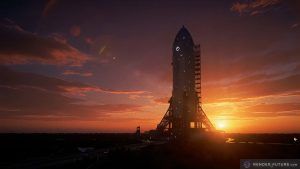
Then the title burns in:
ECHELON HARMONY POLARIS
Space Station
Cut to Earth. Not the glossy postcard view, but the living one. The Cosmodrome at dawn, where the Aether-Class launch vehicle crouches on the pad like a predator about to pounce skyward. The sun licks its flanks, turning fuel lines into liquid gold.
Ground crews move with the quiet urgency of midwives, their spanner wrenches glinting in the dawn light as Light Field displays flash last-minute equations.
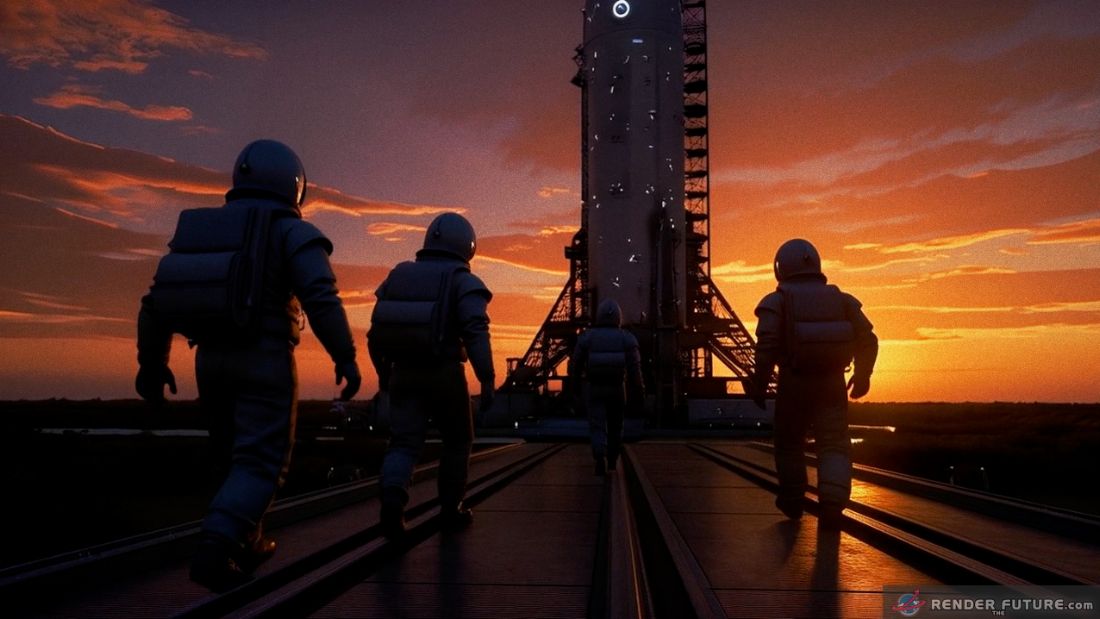 Astronauts move with purposeful ease – no stiff heroics, just professionals at work. In the minimalist Mission Control hub, three technicians monitor Light Field displays that pulse with autonomous systems reports. Their fingers rest lightly on wrist interfaces, ready to override – though the station’s AI hasn’t needed human intervention in 7,302 hours
Astronauts move with purposeful ease – no stiff heroics, just professionals at work. In the minimalist Mission Control hub, three technicians monitor Light Field displays that pulse with autonomous systems reports. Their fingers rest lightly on wrist interfaces, ready to override – though the station’s AI hasn’t needed human intervention in 7,302 hours
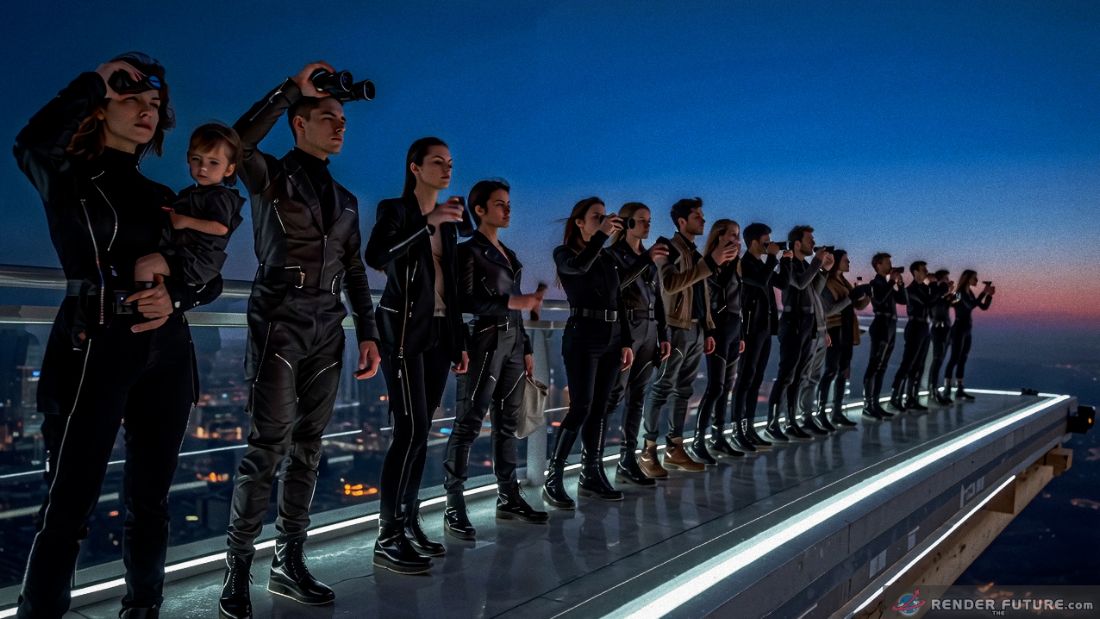
And then there are the civilians – oh, the civilians – gathered on the open observation platform, their postures still as monuments. No glass separates them from history; they stand bathed in dawn light, holding up sleek slates and neural-linked lenses to capture the moment.
A woman cradles her child against her hip, the toddler’s fingers splayed toward the rocket as if trying to grasp the future.
Then ignition.
The sound design doesn’t give you rocket roar – it gives you ribcage vibration. The Aether rises not like a machine, but like something alive shaking off gravity’s grip. Cameras catch the moment the exhaust plume punches through low clouds, scattering light like a prism made of fire.
The grand illusion: A home where physics says you shouldn’t
The genius of Echelon Harmony Polaris isn’t its scale (200 times the ISS) or its price tag ($6.5 trillion, or roughly 65 years of NASA’s current budget). It’s the lie it tells so beautifully: that living in space should feel ordinary. 
The station’s designers hid the future in its bones – antimatter conduits humming behind walnut-paneled walls, microsonic showers tucked into hexagonal sleep pods with wooden trim – and let humanity live in its heart.
“They could have built this place cold – all gleaming alloys and humming holograms. No echoes, no ghosts of Earth. But they knew – humans don’t dream in chrome.”
The result? A station where astronauts do yoga in variable gravity, where lab-grown steaks sizzle in kitchens staffed by silent robotic chefs, and where the loneliest seat aboard (Window Bay Sigma) is the most coveted – perfect for watching lightning storms dance over the Congo at 17,500 mph.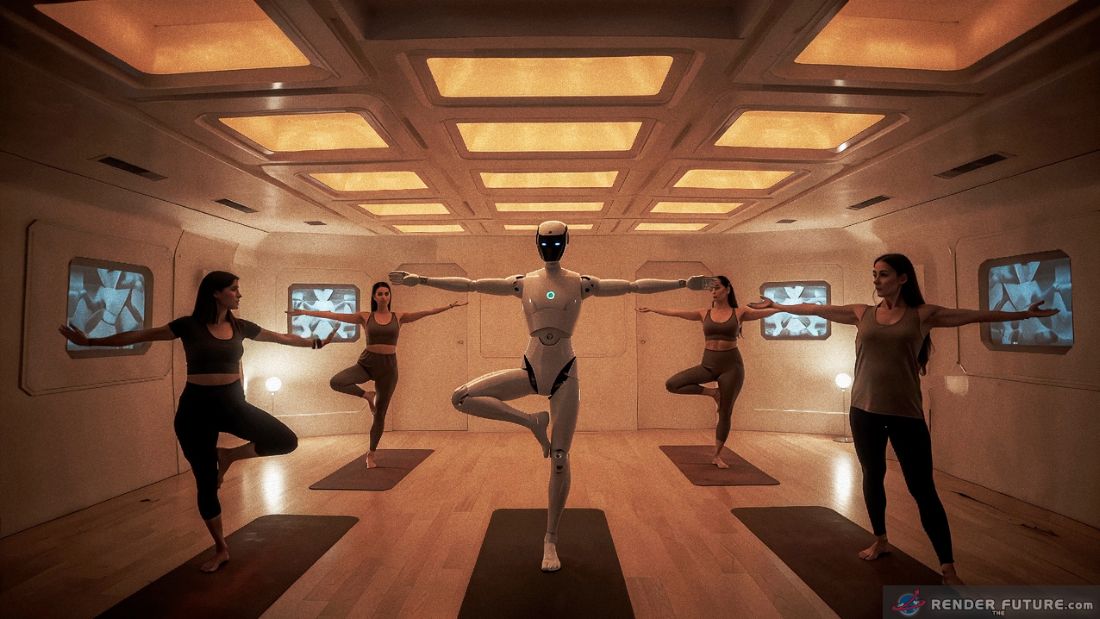
Here, the laws of physics aren’t broken – they’re negotiated. Every rivet in Echelon Harmony Polaris whispers a dare to gravity, every spinning module a cheeky rebuttal to cosmic indifference. This is a place where engineers drink coffee while tinkering with forces that could vaporize continents, where human laughter echoes through corridors that float in a vacuum colder than death itself. 
The station’s real triumph isn’t defying physics – it’s making the impossible feel like breakfast in bed.
Morning rituals in zero gravity: Where dawn is a choice
Forget sunrises. On Echelon Harmony Polaris, morning comes with the whir of gravity generators spinning up – or the deliberate click of keeping them off. Sleep pods double as gyms (muscles wither fast in space), showers are ultrasonic symphonies, and the air smells faintly of pine and ozone – a scent engineers swear was accidental, but everyone knows better.
The station’s Residential Sector, nicknamed The Grove, is a honeycomb of hexagonal pods where privacy screens retract to reveal Earth hanging in the black. Here, the battle against the void is personal:
Out here, your body betrays you. Muscles wither. Bones forget. The void wants you weak. So we fight back – with every drop of sweat that doesn’t fall. With every rep that screams ‘not today’.
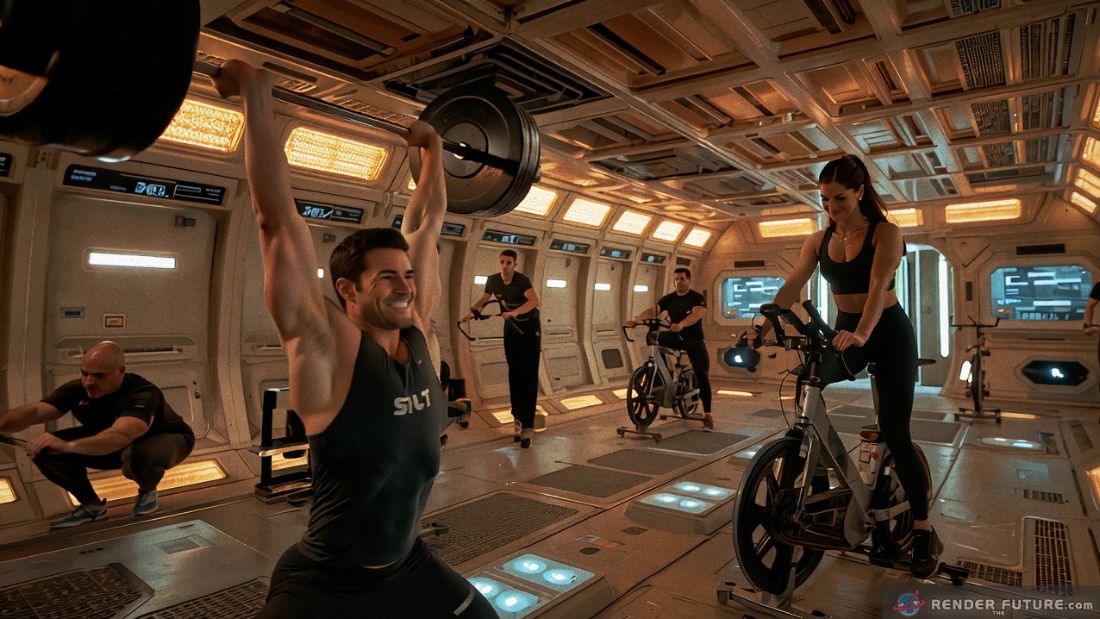 The hydroponic revolution: Where astrophysics meets your grandmother’s tomato soup
The hydroponic revolution: Where astrophysics meets your grandmother’s tomato soup
 Seventy-five percent of every meal aboard begins in the station’s hydroponic farms – lush, sun-drenched labyrinths where roots drink LED light and tomatoes ripen under glass that catches the light like “grandma’s kitchen windows.”
Seventy-five percent of every meal aboard begins in the station’s hydroponic farms – lush, sun-drenched labyrinths where roots drink LED light and tomatoes ripen under glass that catches the light like “grandma’s kitchen windows.”
The chefs? Part botanist, part algorithm-wielding artists, with robotic assistants that julienne carrots like they’re “composing symphonies in steel.”
And yet – the true artistry happens when the sous-chef (human, always human) ignores the recipe algorithms to add “just one more pinch” of asteroid-mined salt. When the midnight snack shift turns into an impromptu culinary jam session, engineers and botanists trading hydroponic herbs like rare vinyl records.
That’s when the station’s true flavor emerges: in the smuggled chili seeds that somehow survived launch, in the way every birthday cake floats ceremoniously to the table, candles flickering in climate-controlled breezes.
The robots may measure nutrients to the microgram, but it’s the chef who licks the spoon – hovering cross-legged in zero-G – that reminds us: taste, like gravity, is a force that demands to be felt, not calculated.
The Nutrition Hub is where the station’s soul is most visible:
“They said we’d eat paste from tubes. Instead, we bite into sun-ripened tomatoes and remember what soil used to taste like.”
From zero-gravity snack bars to asteroid-aged wine tastings, every meal is a middle finger to the “astronaut food” clichés of old.
Bio-Lab Gamma: Where Darwin Meets Mad Science
In Bio-Lab Gamma, scientists play “God with molecules that predate the solar system – and the molecules are winning.” The lab’s three operating levels? “Nobel Prize, Mad Scientist, and ‘Someone Hide the Specimens Before They Learn to Talk.’”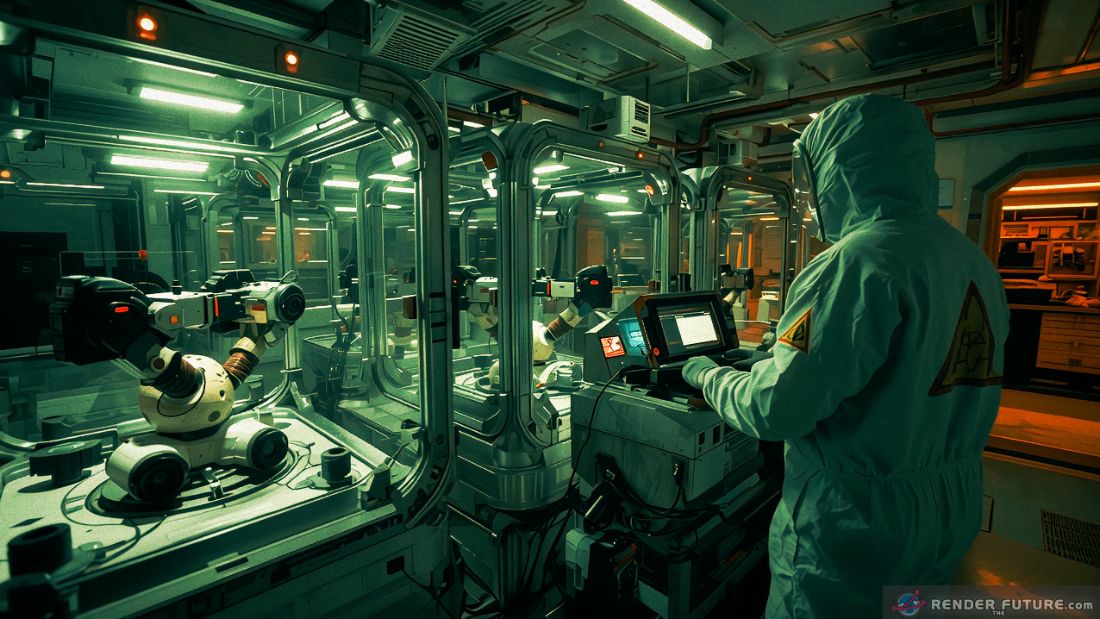
Bio-Lab Gamma operates under three simple rules:
- Don’t name the specimens,
- Don’t feed the specimens after midnight, and
- For the love of Newton, stop giving the specimens thumbs.
Here, PhDs in exobiology regularly lose staring contests to single-celled organisms that predate multicellular life, while the “Oops Wall” displays petri dishes of former colleagues’ career-ending mistakes like trophies.
The breakroom fridge contains equal parts alien soil samples and forgotten lunches, because when you’re playing God with primordial goo, expiration dates become more of a suggestion.
Engineering Spine: Where Machines Have Soul
The Engineering Spine hums with the quiet chaos of a symphony tuning up – wrenches clatter against bulkheads, holographic schematics flicker mid-air, and somewhere, an ancient soldering iron hisses like it’s sharing secrets.
The Engineering Spine carries NASA’s legacy in every vibration – the same problem-solving symphony that once jury-rigged Apollo 13’s air filters with socks and duct tape now orchestrates antimatter conduits.
Those wrenches clattering against bulkheads? They swing to a rhythm first set by Gemini-era technicians. That hissing soldering iron? It whispers the same secrets shared in Houston’s back rooms when the ISS was just grid paper and guts. This isn’t just engineering – it’s NASA’s scrappy genius, polished to a $6.5 trillion shine.
This is where equations take physical form, where torque wrenches become paintbrushes and every welded joint holds the station’s heartbeat. The engineers move with the focused grace of battlefield surgeons, their coveralls stained with hydraulic fluid and coffee in equal measure.
Robots skitter through the maze of conduits like dutiful ants, while humans whisper reassurances to shuddering reactor components as if calming spooked horses. That persistent alarm no one’s fixed for weeks? Everyone knows its particular whine by now – the Spine’s unofficial anthem.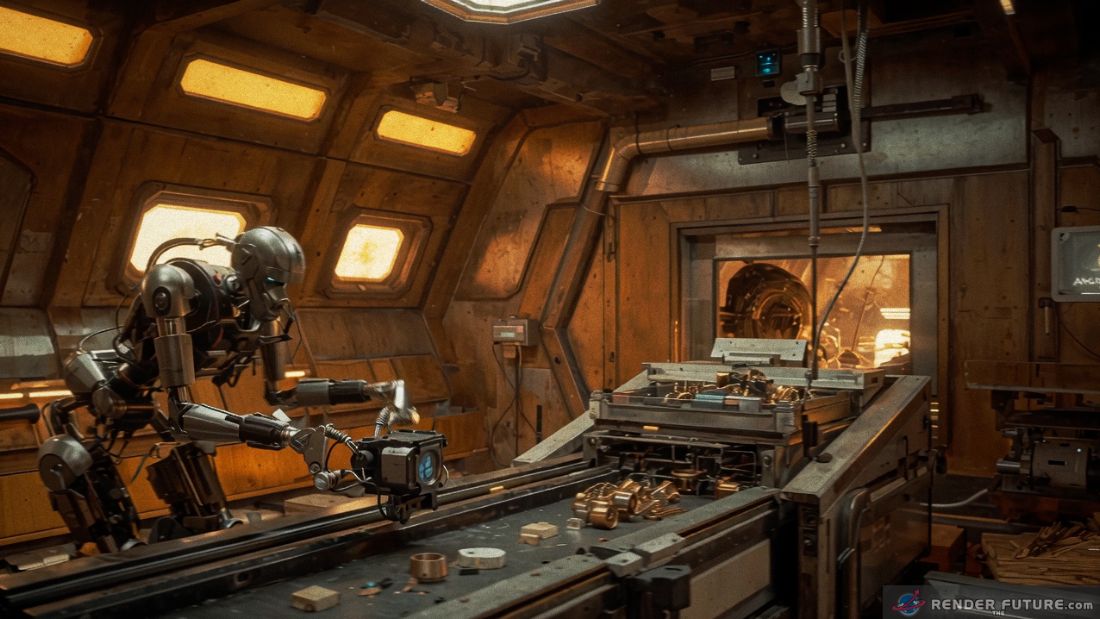
Somehow, against all logic, the whole rickety masterpiece holds together. Panels creak like old floorboards, conduits cough like antique car engines, and yet – the lights stay on, the air stays sweet, and the coffee machine (jury-rigged with parts from a failed thruster array) still sputters to life every morning.
The engine room of miracles (and contained apocalypses)
The Antimatter Conduit isn’t an engine core – it’s “a contained apocalypse.” One wrong calculation here, and the station isn’t just destroyed – it’s erased from existence in a 10-terawatt light show. 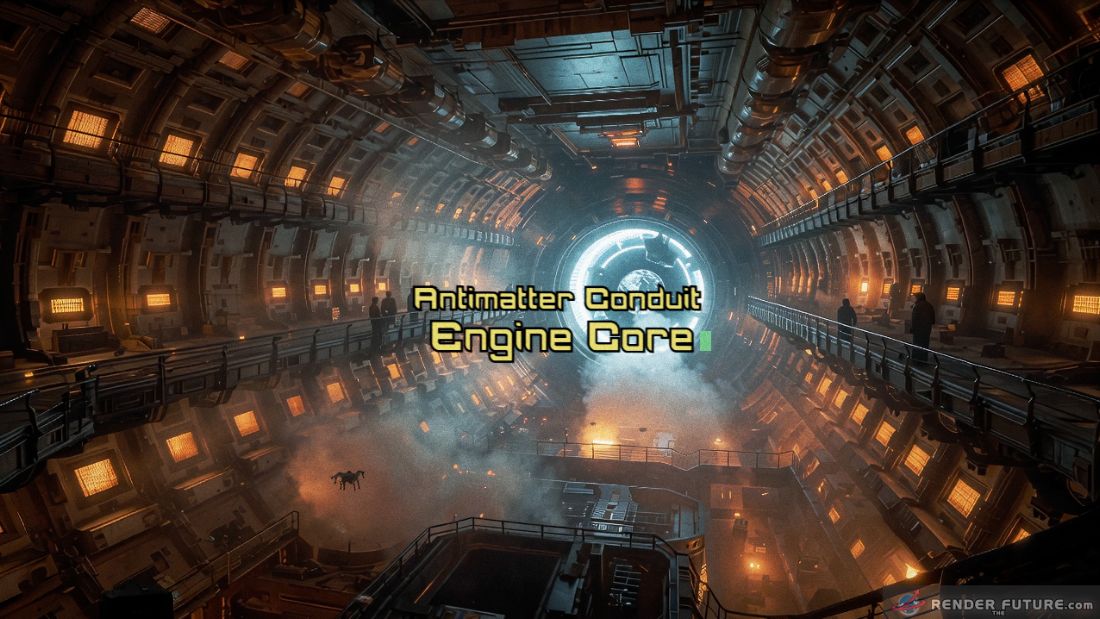
This is where science dances on the edge of a knife – where engineers in grease-stained coveralls casually tweak forces that could rewrite solar systems. The Antimatter Conduit thrums like a sleeping dragon, its containment field a fragile soap bubble holding back enough energy to turn the station into a brief, brilliant star.
Nearby, a junior technician snacks on rice cakes while monitoring readouts that could mean the difference between warp-speed breakthroughs and becoming a cautionary tale.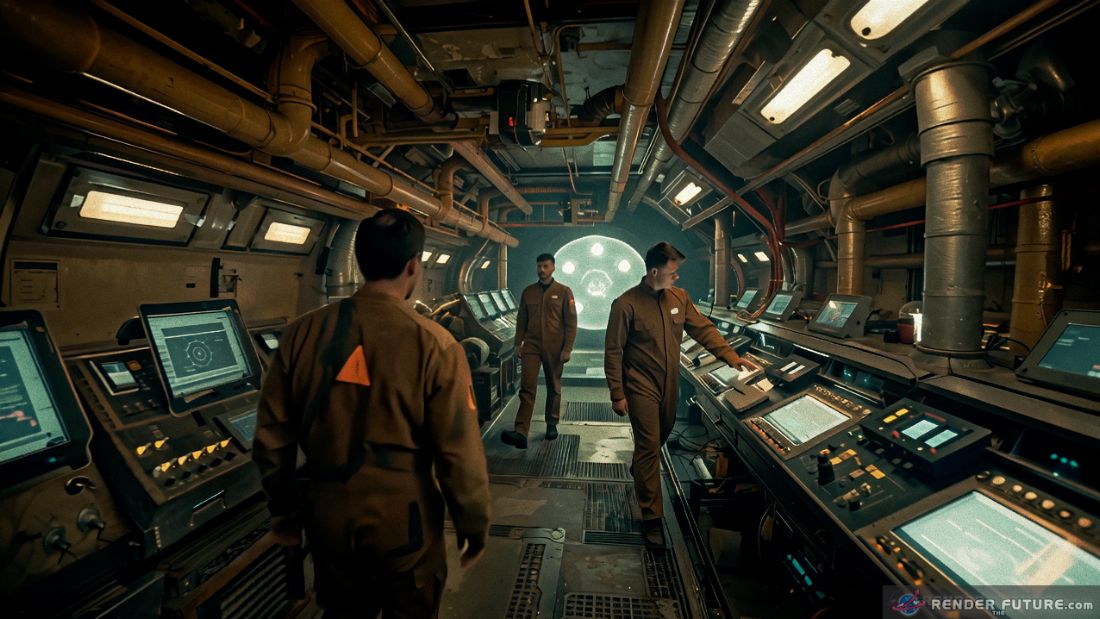
And the miracle? That this room smells faintly of burnt coffee and ozone instead of pure terror. Every warning siren here is a love song to human audacity – we strapped a doomsday device to our home and called it progress.
Celestial NavCom Grid: The Sky’s Silent Conductor
Here, mathematics dances on the edge of a knife. The Celestial NavCom Grid glows like a spiderweb of stars, each blinking node representing a spacecraft, asteroid, or orbital path in the delicate ballet of near-Earth space. It turns cosmic navigation into ballet, with orbits plotted on “a knife’s edge between celestial mechanics and sheer audacity.”
Astronomers whisper to supercomputers, pilots negotiate with gravity itself, and somewhere in the chaos, a coffee-stained notepad holds the calculations that keep it all from colliding.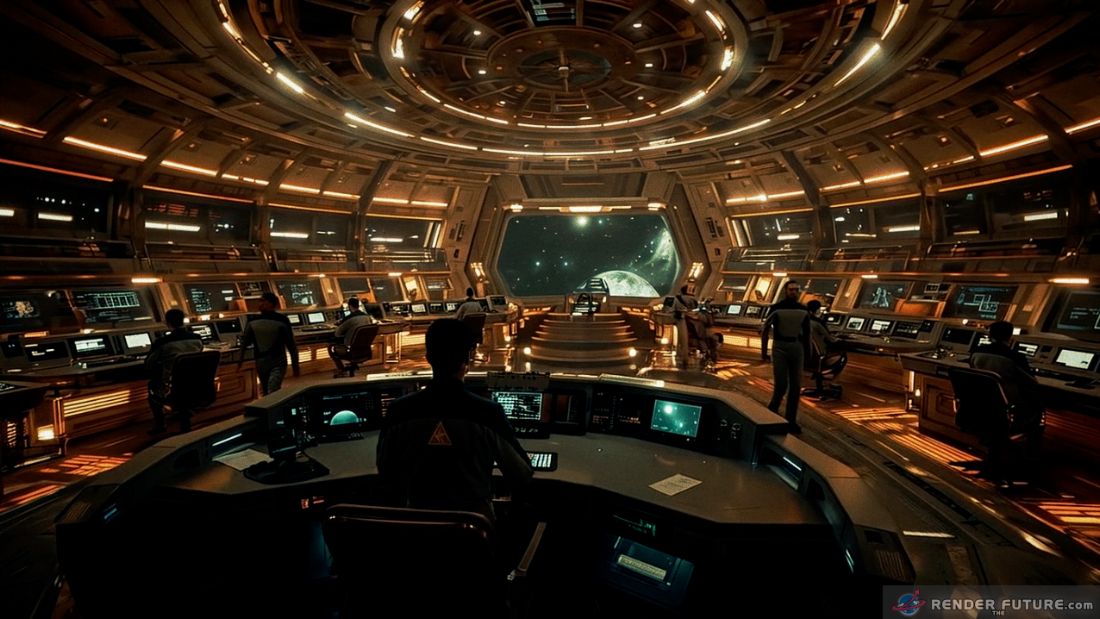
This is where poetry meets physics – a single decimal point can mean the difference between a graceful orbital waltz and catastrophic cosmic traffic jam. The Grid doesn’t just chart paths; it conducts an endless symphony of celestial motion, complete with reluctant asteroid soloists and temperamental comet divas.
And at the center of it all? A team of sleep-deprived navigators who’ve long since stopped seeing numbers and started reading the solar system’s moods. Their mantra: The universe abhors a straight line – so we plot the prettiest curves.
EVA Shift: Dancing with the Void
Tethered to the station by threads no thicker than a heartbeat, the EVA crew moves in silent ballet against the infinite. Their tools flash in the sunlight, each turn of a wrench a defiance of the vacuum’s hunger. 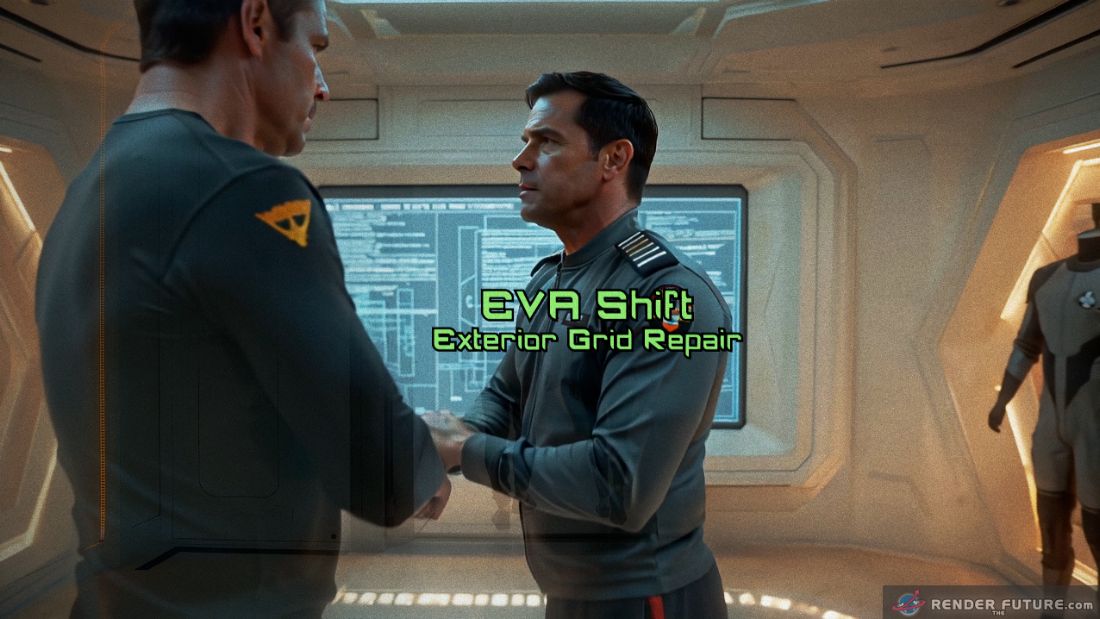
Solar panels sigh back to life under their gloves – not because repairs are routine, but because these men and women refuse to let darkness win. The Earth rolls by below, indifferent. They work faster.
“No heroics out here,” the mission patch reads. Just the oldest human story: light against the dark, warmth against the cold, one stubborn heartbeat at a time.
Humanity’s Orbit: Where Souls Outshine Stars
The quiet rebellion: Why parks matter more than oxygen
Even here, humanity clings to its quirks. The Atrium Park’s trees grow under an artificial sky because “air recyclers preserve life, but parks preserve sanity.”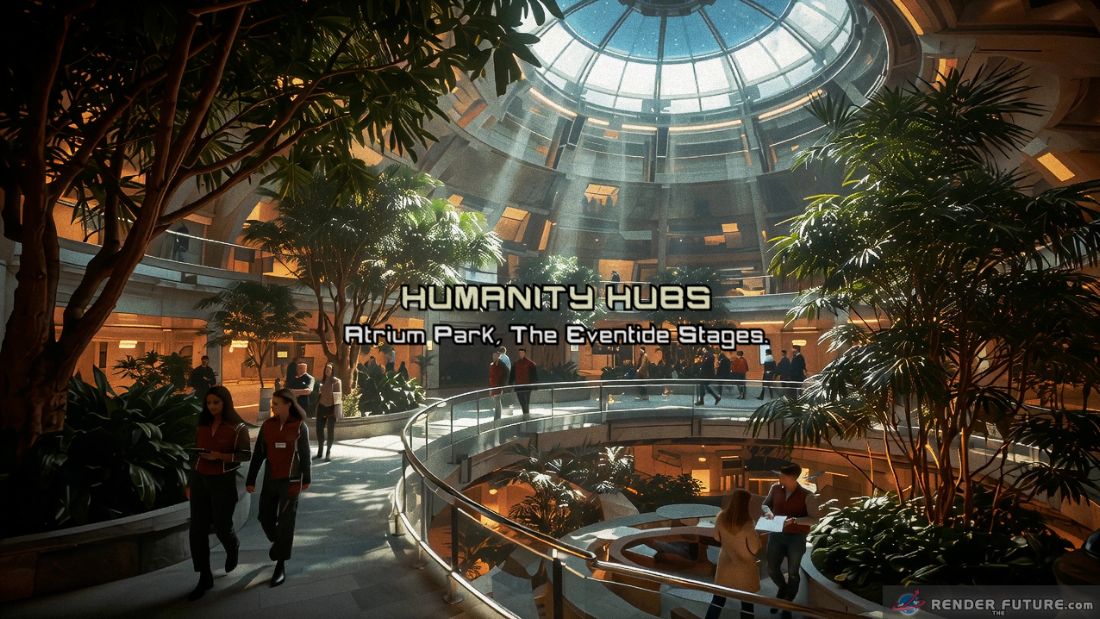
In the park, rebellion blooms in stolen moments – lovers whispering behind hydroponic hedges where tomatoes overhear more secrets than station security, meditators floating cross-legged beneath artificial birches as their breath syncs to oxygen recyclers’ hum.
The parks are where engineers on break sketch warp coils in the dirt with twigs, where a first kiss tastes like strawberries grown under grow-lights, where someone always leaves a paperback on the bench – dog-eared at the good parts – for the next dreamer.
At dawn, the tai chi group moves as one organism between vegetable patches, their slow arcs tracing orbital mechanics with human grace. These green spaces aren’t luxuries; they’re the station’s silent manifesto: we built a marvel of engineering so we’d have somewhere beautiful to be homesick. 
Even the roses know their purpose – their thorns catch on uniforms not as obstacles, but as reminders: stay. Breathe. You’re still earthbound where it counts.
The Eventide Stages
Spotlights carve through the darkness as a lone guitarist bends strings into the night, their boots planted firm on the stage while the chords ripple outward. The music lingers in the air alive, fading into the station’s steady hum. The crowd leans in, silent, as if the song might slip away too soon.

The crowd sways in perfect synchronization, not to the beat, but to the subtle vibrations transmitted through the deck plating – their applause sending a hundred drink bubbles spiraling toward the ceiling. Here, every chord reminds the void: silence may reign in space, but never here.
Window Bay Sigma
This is where the station holds its breath. A single seat bolted before a meter-thick viewport, its cushions worn smooth by countless hours of silent company. Here, crew members take turns watching Earth’s storms flicker like dying lightbulbs across continents – lightning stitching clouds over the Amazon, auroras bleeding green across Arctic ice.
The bay’s rule is unwritten but absolute: no talking, no slates (tablets), just the quiet hum of the air recycler and the occasional gasp as a hurricane blooms into existence over the Pacific. Some come to mourn, others to remember, a few just to feel terrifyingly small.
The only interruption? The soft click of the next shift’s boots at the door, their shadow lingering just long enough to say I’ll wait. The most coveted reservation aboard, and the only one no one ever rushes.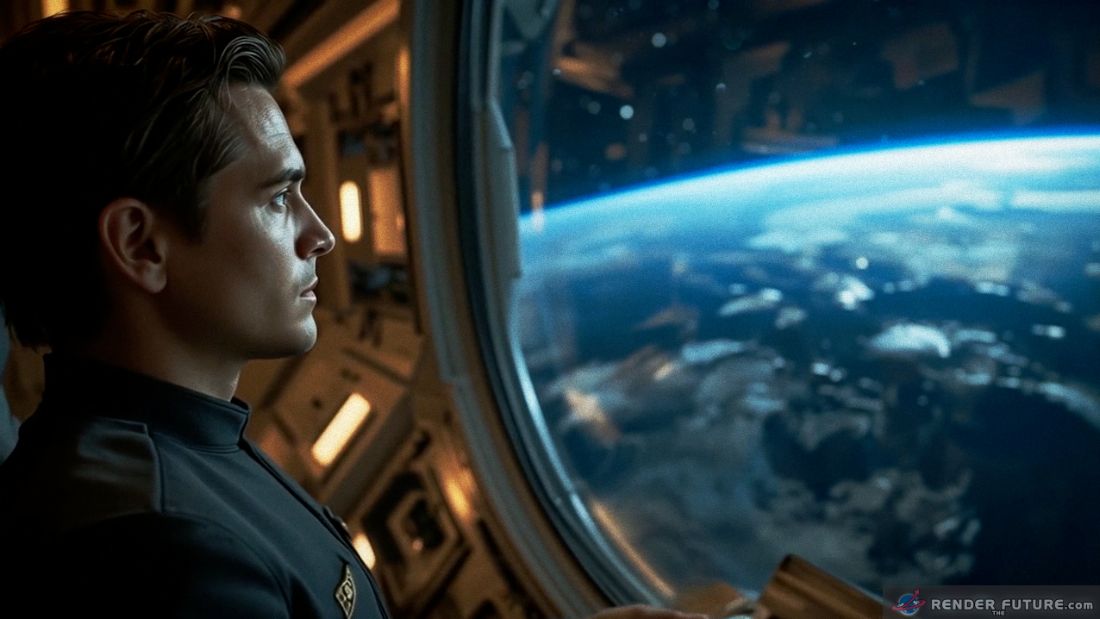
The final truth: The future isn’t sterile. It’s alive
As the station’s night cycle begins, robots charge and humans dream – some of gravity, some of the next day’s work, some of nothing at all.
Echelon Harmony Polaris isn’t just a feat of engineering. It’s proof that humanity’s future in space won’t be cold, efficient, or impersonal.
It’ll smell like garlic. It’ll creak like old floorboards. It’ll have scuffed walls and laughter echoing through corridors where antimatter thrums behind the panels.
Out here, we’re fragile. Our air is recycled, our food grown under lamps, every system held together by ingenuity and hope. The universe doesn’t care if our lights stay on. But in the clatter of the mess hall, the shared laughter over a fresh tomato, the way we still gasp at Earthrises – we prove something remarkable:
We care.
Deeply. Foolishly. Beautifully.












